Growing Fennel at Home can seem daunting, but trust me, it’s easier than you think! Imagine stepping outside your back door and snipping fresh, fragrant fennel fronds to add a burst of anise-like flavor to your salads, soups, or even grilled fish. That’s the magic of home gardening, and I’m here to show you how to unlock it, one fennel bulb at a time.
Fennel has a rich history, dating back to ancient Greece and Rome, where it was prized for its medicinal properties and culinary uses. The Romans even believed it bestowed longevity! Today, while we might not be seeking immortality, we can certainly appreciate the delicious and versatile nature of this herb. But why buy it at the store when you can have a constant supply right outside your door?
In today’s world, where we’re all looking for ways to eat healthier, save money, and connect with nature, growing fennel at home offers a perfect solution. This DIY guide will provide you with simple, step-by-step instructions and clever hacks to ensure your fennel thrives, even if you’re a complete beginner. Forget complicated gardening jargon; I’ll share my tried-and-true methods for successful fennel cultivation, so you can enjoy the satisfaction of harvesting your own homegrown goodness. Let’s get started!
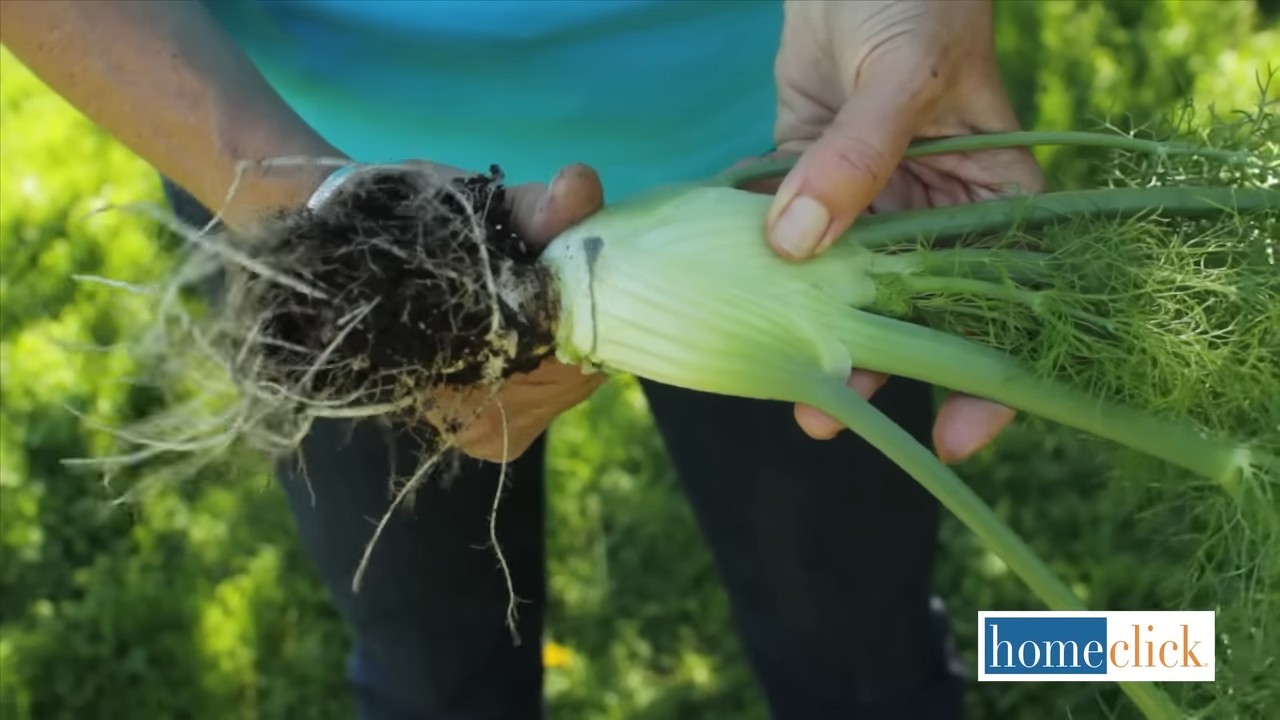
Growing Fennel at Home: A Beginner’s Guide
Hey there, fellow gardening enthusiasts! I’m so excited to share my experience with growing fennel at home. It’s surprisingly easy, and the rewards – fresh, flavorful bulbs and feathery fronds – are totally worth it. Whether you’re a seasoned gardener or just starting out, this guide will walk you through everything you need to know to successfully cultivate fennel in your own backyard or even in containers.
Choosing Your Fennel Variety
Before we dive into the nitty-gritty, let’s talk about fennel varieties. There are two main types: bulb fennel (also known as Florence fennel) and herb fennel.
* **Bulb Fennel:** This is the one you’ll typically find in grocery stores. It produces a swollen, bulb-like base that’s delicious raw or cooked. Popular varieties include ‘Zefa Fino,’ ‘Rondo,’ and ‘Perfection.’
* **Herb Fennel:** This type is grown primarily for its leaves and seeds. It doesn’t form a bulb. ‘Bronze Fennel’ is a popular choice, known for its beautiful bronze foliage.
For this guide, I’ll be focusing on growing bulb fennel, but many of the principles apply to herb fennel as well.
Getting Started: Planting Fennel
Fennel can be grown from seed or transplants. I prefer starting from seed because it gives me more control over the process, but transplants can be a good option if you’re short on time or want a head start.
Starting from Seed:
1. **Timing is Key:** Fennel is a cool-season crop, so the best time to plant it is in early spring or late summer/early fall. In my experience, spring planting works best if you live in a region with mild summers. For fall planting, make sure you have enough time for the bulbs to mature before the first frost.
2. **Prepare the Soil:** Fennel needs well-drained soil that’s rich in organic matter. Before planting, amend your soil with compost or well-rotted manure. This will provide essential nutrients and improve drainage. I usually dig in about 2-3 inches of compost.
3. **Sowing the Seeds:** Sow the seeds directly into the ground, about 1/4 inch deep and 2-3 inches apart. Gently cover the seeds with soil and water thoroughly.
4. **Thinning Seedlings:** Once the seedlings emerge (usually in 7-14 days), thin them to about 8-12 inches apart. This will give the plants enough room to grow and develop their bulbs. Don’t be afraid to snip off the weaker seedlings – it’s better to have fewer, stronger plants.
5. **Watering:** Keep the soil consistently moist, but not waterlogged. Water deeply whenever the top inch of soil feels dry.
Using Transplants:
1. **Choose Healthy Transplants:** Select transplants that are healthy and vigorous, with no signs of disease or pests.
2. **Prepare the Planting Hole:** Dig a hole that’s slightly larger than the root ball of the transplant.
3. **Planting:** Gently remove the transplant from its container and loosen the roots slightly. Place the transplant in the hole, making sure the top of the root ball is level with the surrounding soil.
4. **Backfill and Water:** Backfill the hole with soil and gently firm it around the base of the plant. Water thoroughly.
5. **Spacing:** Space transplants about 8-12 inches apart.
Caring for Your Fennel Plants
Once your fennel plants are established, they’re relatively low-maintenance. Here are a few key things to keep in mind:
* **Sunlight:** Fennel needs at least 6 hours of sunlight per day. Choose a sunny spot in your garden for best results.
* **Watering:** As mentioned earlier, consistent watering is important. Avoid letting the soil dry out completely, especially during hot weather.
* **Fertilizing:** Fennel is a heavy feeder, so it benefits from regular fertilization. I like to use a balanced organic fertilizer every 4-6 weeks. You can also side-dress with compost or well-rotted manure.
* **Weeding:** Keep the area around your fennel plants free of weeds. Weeds can compete with your fennel for nutrients and water.
* **Earthing Up:** As the bulbs start to develop, you can “earth up” the soil around them. This means mounding soil around the base of the bulb to blanch it and make it more tender. I usually do this when the bulbs are about the size of a tennis ball.
* **Pest and Disease Control:** Fennel is generally pest-resistant, but it can be susceptible to aphids and slugs. Check your plants regularly for signs of infestation and take action if necessary. I usually use a strong spray of water to dislodge aphids. For slugs, you can try beer traps or diatomaceous earth.
Harvesting Your Fennel
The best part of growing fennel is, of course, harvesting it!
* **When to Harvest:** You can harvest the bulbs when they’re about the size of a tennis ball or larger. The exact timing will depend on the variety and growing conditions. I usually harvest when the bulbs are firm and plump.
* **How to Harvest:** To harvest the bulb, use a sharp knife to cut it off at the base of the plant. You can also harvest the fronds (leaves) at any time. Just snip them off with scissors or pruning shears.
* **Storing Fennel:** Fresh fennel bulbs can be stored in the refrigerator for up to a week. Wrap them in a damp paper towel and place them in a plastic bag. Fennel fronds are best used fresh, but you can also freeze them for later use.
Troubleshooting Common Fennel Problems
Even with the best care, you might encounter a few problems when growing fennel. Here are some common issues and how to address them:
* **Bolting:** Bolting is when the plant prematurely flowers and goes to seed. This can happen if the weather gets too hot or if the plant is stressed. To prevent bolting, choose a bolt-resistant variety, plant in the cool season, and provide consistent watering.
* **Bulb Splitting:** Bulb splitting can occur if the plant experiences inconsistent watering or nutrient deficiencies. Make sure to water regularly and fertilize as needed.
* **Pests:** As mentioned earlier, aphids and slugs can be a problem. Use appropriate pest control methods to keep them at bay.
* **Yellowing Leaves:** Yellowing leaves can be a sign of overwatering, underwatering, or nutrient deficiencies. Check the soil moisture and adjust your watering schedule accordingly. Fertilize if necessary.
Using Your Homegrown Fennel
Now that you’ve harvested your fennel, it’s time to enjoy it! Here are a few of my favorite ways to use homegrown fennel:
* **Raw:** Thinly sliced fennel bulb is delicious in salads. It adds a crunchy texture and a slightly sweet, anise-like flavor.
* **Roasted:** Roasted fennel is a simple and delicious side dish. Just toss the bulb with olive oil, salt, and pepper, and roast it in the oven until tender.
* **Grilled:** Grilled fennel is another great option for a summer barbecue.
* **Soups and Stews:** Fennel adds a unique flavor to soups and stews.
* **Fennel Fronds:** Use the fronds as a garnish for salads, soups, and other dishes. They have a delicate, anise-like flavor.
* **Fennel Seeds:** You can collect the seeds from your fennel plants and use them as a spice. They have a stronger anise flavor than the bulb or fronds.
Growing Fennel in Containers
Don’t have a garden? No problem! You can also grow fennel in containers.
* **Choose the Right Container:** Select a container that’s at least 12 inches in diameter and 12 inches deep. Make sure it has drainage holes.
* **Use a Good Quality Potting Mix:** Use a well-draining potting mix that’s rich in organic matter.
* **Planting:** Plant the seeds or transplants as described above.
* **Watering:** Water regularly, keeping the soil consistently moist.
* **Fertilizing:** Fertilize every 4-6 weeks with a balanced organic fertilizer.
* **Sunlight:** Place the container in a sunny location that gets at least 6 hours of sunlight per day.
Final Thoughts
Growing fennel at home is a rewarding experience that allows you to enjoy fresh, flavorful produce right from your own backyard. With a little bit of care and attention, you can successfully cultivate fennel and reap the benefits of this versatile and delicious vegetable. So, grab your seeds or transplants, get your hands dirty, and start growing! Happy gardening!
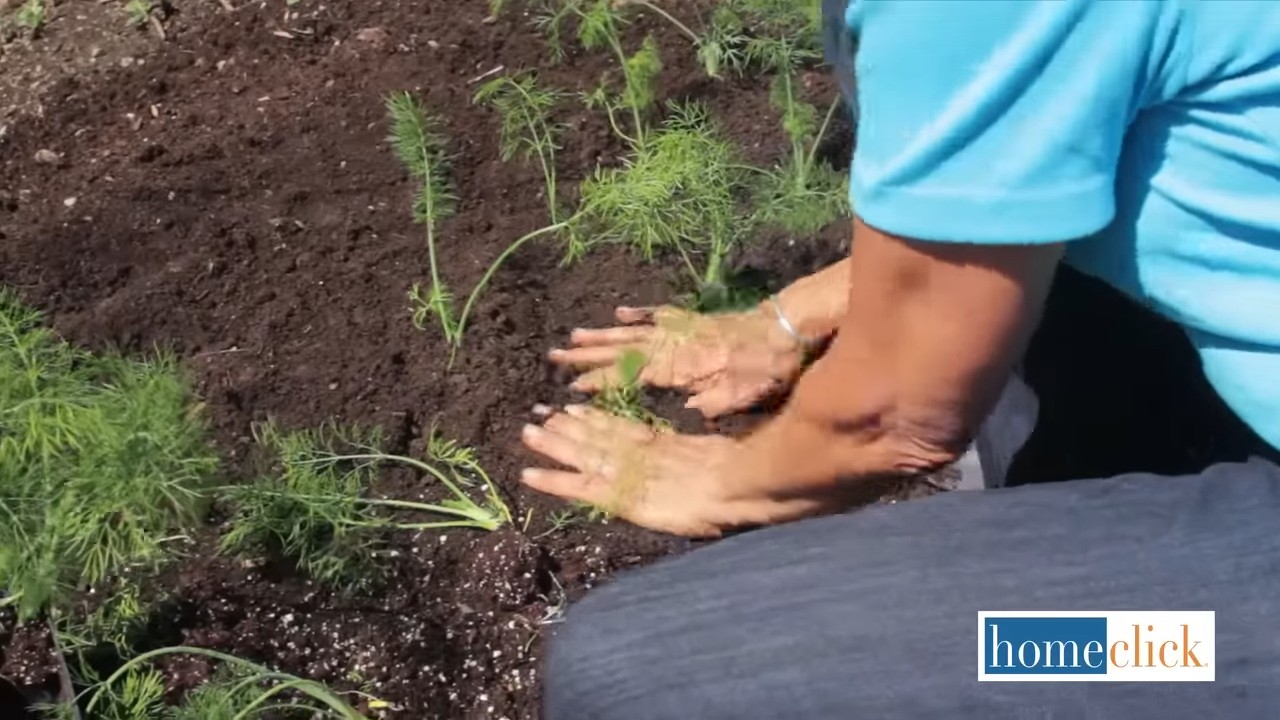
Conclusion
So, there you have it! Growing fennel at home is not only achievable, but it’s also a rewarding experience that brings fresh, aromatic flavors directly to your kitchen. We’ve walked through the essential steps, from selecting the right variety and preparing your garden to nurturing your plants and harvesting your bounty.
Why is this DIY trick a must-try? Because store-bought fennel simply can’t compare to the vibrant taste and crisp texture of homegrown. You control the growing conditions, ensuring a pesticide-free, organic product bursting with flavor. Plus, the entire plant is usable! The bulb adds a delicate anise flavor to salads and stews, the fronds make a beautiful and flavorful garnish, the stalks can be juiced or added to stocks, and the seeds offer a potent spice for various dishes.
But the benefits extend beyond just taste. Gardening is a therapeutic activity, connecting you with nature and providing a sense of accomplishment. Watching your fennel plants thrive from tiny seeds to mature specimens is incredibly satisfying. And let’s not forget the cost savings! Once you’ve established your fennel patch, you’ll have a continuous supply of this versatile vegetable, reducing your grocery bills and minimizing your environmental impact.
Looking for variations? Consider growing different varieties of fennel to explore their unique characteristics. ‘Florence’ fennel is prized for its bulb, while ‘Bronze’ fennel adds a striking visual element to your garden with its feathery, dark foliage. You can also experiment with companion planting. Fennel pairs well with dill, chamomile, and yarrow, attracting beneficial insects and enhancing the overall health of your garden.
Another exciting variation is growing fennel in containers. This is perfect for those with limited space or who want to keep their fennel plants closer at hand. Choose a large pot with good drainage and use a high-quality potting mix. Container-grown fennel may require more frequent watering and fertilization, but it’s a convenient way to enjoy fresh fennel even if you don’t have a traditional garden.
We’ve covered the basics, but remember that gardening is a journey of continuous learning. Don’t be afraid to experiment, adapt, and discover what works best for you and your local climate. Observe your plants closely, paying attention to their needs and adjusting your care accordingly.
Growing fennel at home is an investment in your health, your taste buds, and your well-being. It’s a simple yet profound way to connect with the natural world and enjoy the fruits (or rather, vegetables) of your labor.
So, what are you waiting for? Grab some fennel seeds, prepare your garden, and embark on this exciting adventure. We’re confident that you’ll be amazed by the results. And most importantly, we want to hear about your experience! Share your tips, tricks, and triumphs in the comments below. Let’s build a community of fennel enthusiasts and inspire others to discover the joys of homegrown goodness. Don’t forget to tag us in your photos on social media – we can’t wait to see your beautiful fennel plants! Happy gardening!
Frequently Asked Questions (FAQ)
What is the best time of year to plant fennel?
The best time to plant fennel depends on your climate. In cooler regions with mild summers, you can start seeds indoors 6-8 weeks before the last expected frost and transplant them outdoors after the danger of frost has passed. Alternatively, you can direct sow seeds outdoors in late spring or early summer. In warmer climates with mild winters, you can plant fennel in the fall for a winter harvest. Avoid planting fennel during the hottest months of summer, as high temperatures can cause it to bolt (go to seed prematurely).
How much sunlight does fennel need?
Fennel thrives in full sun, requiring at least 6-8 hours of direct sunlight per day. Insufficient sunlight can result in leggy growth and reduced bulb development. If you’re growing fennel indoors, place it near a sunny window or use grow lights to supplement natural light.
What kind of soil is best for growing fennel?
Fennel prefers well-drained, fertile soil with a slightly acidic to neutral pH (6.0-7.0). Amend your soil with compost or other organic matter to improve drainage and fertility. Avoid heavy clay soils, as they can retain too much moisture and lead to root rot.
How often should I water fennel?
Water fennel regularly, especially during dry periods. Keep the soil consistently moist but not waterlogged. Water deeply at the base of the plant, avoiding wetting the foliage, which can increase the risk of fungal diseases. Reduce watering frequency during cooler weather.
Does fennel need fertilizer?
Fennel benefits from regular fertilization, especially during its active growth phase. Use a balanced fertilizer or a fertilizer specifically formulated for vegetables. Apply fertilizer according to the package instructions. You can also side-dress your fennel plants with compost or aged manure to provide a slow-release source of nutrients.
How do I prevent fennel from bolting?
Bolting is a common problem with fennel, especially in hot weather. To prevent bolting, choose bolt-resistant varieties, plant fennel in a location that receives partial shade during the hottest part of the day, and water regularly to keep the soil cool and moist. You can also mulch around your fennel plants to help retain moisture and regulate soil temperature. Harvest the bulb as soon as it reaches a usable size to prevent it from becoming tough and bitter.
When and how do I harvest fennel?
You can harvest fennel bulbs when they reach a usable size, typically 2-3 inches in diameter. To harvest, use a sharp knife to cut the bulb at the base of the plant, just above the soil line. You can also harvest the fronds and stalks as needed for culinary use. Fennel seeds can be harvested when they turn brown and dry. Cut the seed heads from the plant and hang them upside down in a paper bag to dry. Once the seeds are completely dry, you can separate them from the seed heads and store them in an airtight container.
Is fennel a perennial or an annual?
Fennel is technically a short-lived perennial in zones 4-9, but it is often grown as an annual, especially in colder climates. If you live in a warmer climate, you can leave your fennel plants in the ground over winter, but they may become less productive in subsequent years. To ensure a continuous supply of fresh fennel, it’s best to replant new seeds each year.
Can I grow fennel in containers?
Yes, fennel can be successfully grown in containers. Choose a large pot with good drainage and use a high-quality potting mix. Container-grown fennel may require more frequent watering and fertilization than fennel grown in the ground. Place the container in a location that receives at least 6-8 hours of direct sunlight per day.
Is fennel invasive?
Fennel can be considered invasive in some areas, particularly in California and other parts of the western United States. It can spread rapidly through self-seeding and compete with native vegetation. If you’re concerned about fennel becoming invasive in your area, consider growing it in containers or deadheading the flowers before they go to seed.

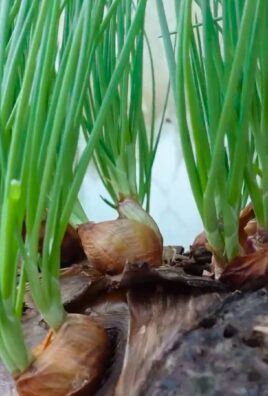
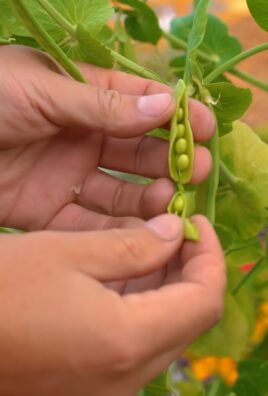
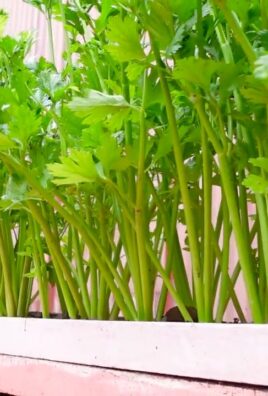
Leave a Comment